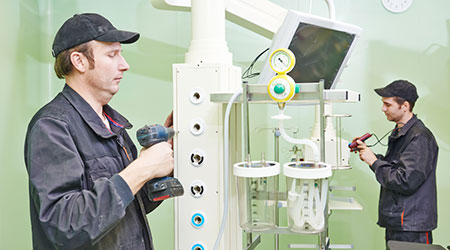When a healthcare facility is undergoing construction mold, microbes and other airborne particles can be introduced into the environment, but when a climate control solution is used, humidity is dramatically reduced, hindering the growth of construction-related mold, bacteria and other contaminants, according to an article on the MarketScale website.
Using the HVAC system to keep a construction site dry can be ineffective. Further, the additional power necessary to keep construction materials dry can overburden the equipment.
Specifically designed and optimized to prevent moisture-related issues at any construction site, temporary dehumidification systems typically use less energy than permanent HVAC equipment, helping to ensure these systems are not overtaxed and remain free of construction-related contaminants and dust.
During a hospital construction project, humidity control can help ensure fewer losses and setbacks during the construction process, leading to a more efficient and cost-effective workflow.

 What Every EVS Leader Needs To Know
What Every EVS Leader Needs To Know Blackbird Health Opens New Clinic in New Jersey
Blackbird Health Opens New Clinic in New Jersey St. John's Riverside Hospital Falls Victim to Data Breach
St. John's Riverside Hospital Falls Victim to Data Breach Grounding Healthcare Spaces in Hospitality Principles
Grounding Healthcare Spaces in Hospitality Principles UC Davis Health Selects Rudolph and Sletten for Central Utility Plant Expansion
UC Davis Health Selects Rudolph and Sletten for Central Utility Plant Expansion